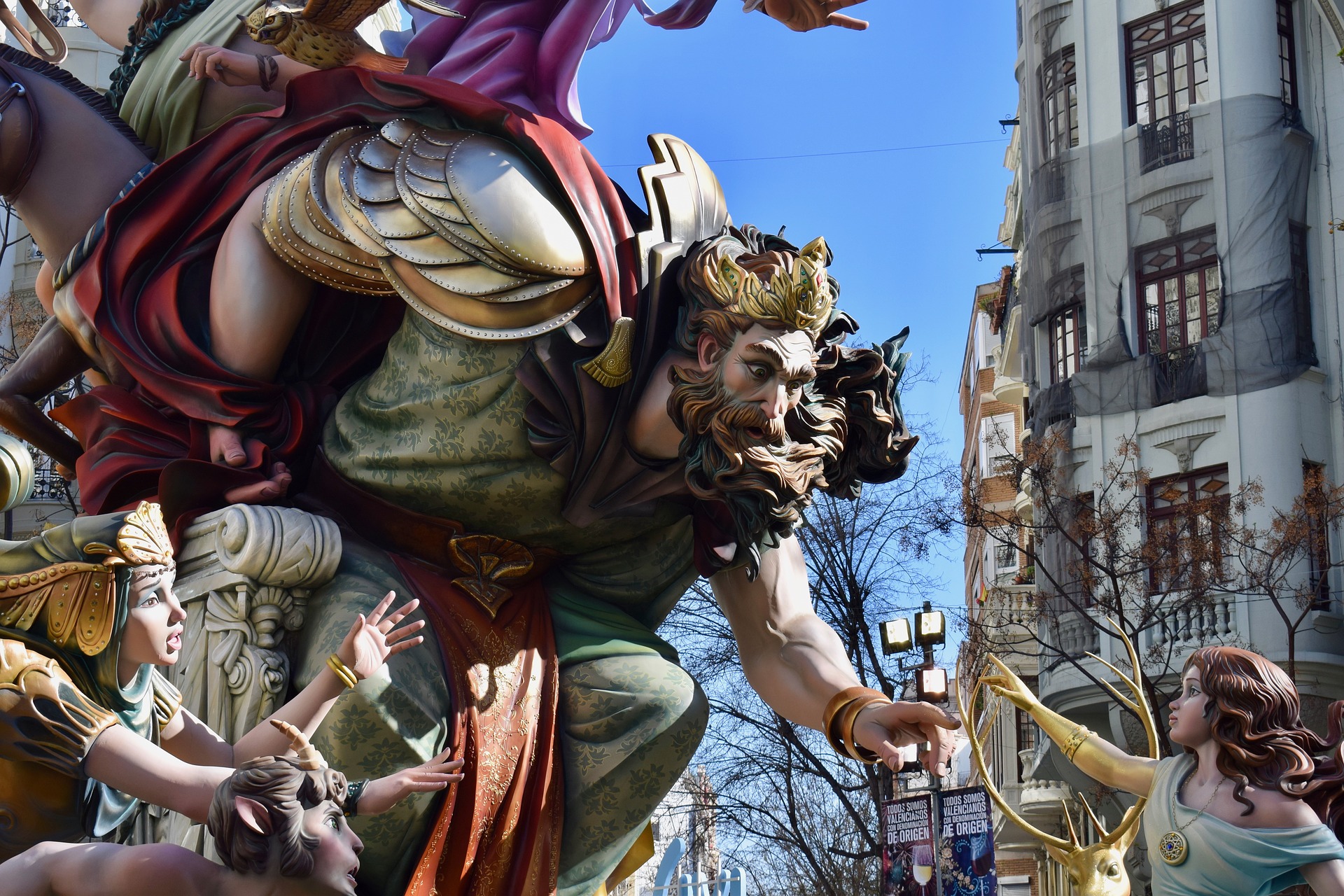BigTranslation’s nerve-centre is located in Valencia, a city which is open to the world and which contains many reasons for you to visit. Its festivals, culture, sport and gastronomy are just some of these.
The Fallas stands out among the festivals with its mix of art, satire and tradition.
The origin of the Fallas
The origin of the Fallas goes back centuries to when the carpenters burned furniture and other items on the night before Saint Joseph’s feast day, who is the patron saint of carpenters. These items had served them over the winter months and they burned them to welcome spring.
Today, the Fallas have evolved and are characterised by the creation of large groups of sculptures (the Fallas) consisting of ninots or figures inspired by current events and which are created by artists. As dictated by tradition, on the last day of the Fallas all the sculptures are burned.
Other traditions are also added to the Fallas, such as music, gunpowder and flowers. During the Fallas celebrations, which take place from 14th to 19th of March, Valencia becomes a great big party where mascletàs (setting off fireworks) and the fireworks displays intermingle with music bands and the falleros (festival participants) in their traditional regional dress, the attire also being an essential part of the festival..
In addition, a Fallera Mayor is chosen each year from among all the falleros. This person will take on the role of representing Valencia throughout the world for the year and thereby promoting the festival so that both people from Valencia, and those that are not, can enjoy it.
Although the Fallas originated in Valencia, they also take place in various localities of the Valencian Community, as well as in other communities, and even abroad where Valencians who had to emigrate carry on the tradition.
The Fallas, World Cultural Heritage
Since 2016 the Fallas have been classified as an Intangible World Cultural Heritage. UNESCO defines this cultural heritage as “an assemblage of creations based on the cultural tradition of a community and expressed by a group of people”.
Because of their artisan and traditional practices, the Fallas have been passed on from parents to their children, thereby collectively safeguarding the essence of these festivities, and this has led to their inclusion within this select list.
The Fallas also instil pride in all the towns that celebrate them, and they achieve a very important sense of social cohesion, one of the requirements for the awarding of this distinction by UNESCO.
The Fallas of Valencia has always attempted to open up the festival to the rest of the world and work has been constantly carried out to publicise all its traditions, both through their internationalisation of social networks and other online media, and through taking the festival to locations such as Mainz in Germany, or to the Burning Man Festival in the USA.
In summary, the Fallas have become an international cultural event thanks to the efforts of all the falleros who work throughout the year to ensure the festival is rich in tradition, but also open to the world.
Without further ado, we invite you to watch a small summary of what the Valencian Fallas are like, and we encourage you to come and enjoy them at least once in your life.



